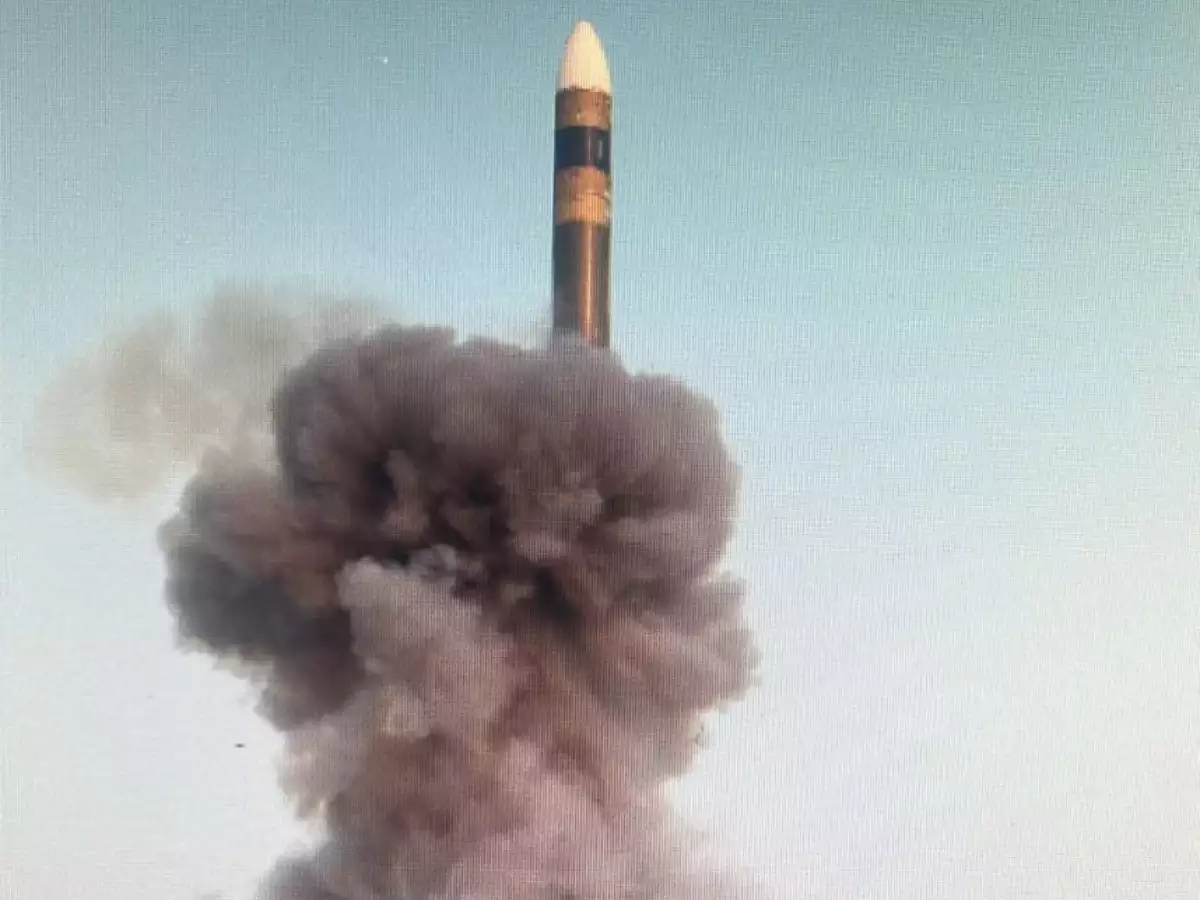MIRV gives India an important capability in its growing nuclear competition with China and the prowess to multiply its N-arsenal faster.
The Narendra Modi government’s decision to test the Agni-5 MIRV missile marks a major development in the global strategic balance, earning the nuclear-armed country the latest “don’t mess with us” tag.
Though India is the eighth N-armed nation to develop the Multiple Independently Targetable Re-entry Vehicle (MIRV) technology, it makes both Pakistan and China more vulnerable and adds more clout to India’s military power, say experts.
The Agni-5 missile is a game changer for regional geopolitics as it delivers the capability of targeting adversaries in the east and west within a 5,000-plus km radius. MIRV gives India an important capability in its growing nuclear competition with China and the prowess to multiply its N-arsenal faster.
Former DRDO chief G. Satheesh Reddy called the Agni-5 MIRV, named Divyastra by the Prime Minister, a “game-changer” for the armed forces.
“The Agni-5 is equipped with the MIRV tech, enabling the launch of multiple warheads at the same time. We have multiple payloads now that can be used to strike targets at a distance of a few hundred kilometres simultaneously. The enemy wouldn’t have a chance to react and strike back, as its missile defence would be disabled. So, ‘Divyastra’ is undoubtedly a game-changer for our armed forces. It is equipped with a technologically advanced system and will add significantly to the might of our defence forces,” he said.
Former Vice Chief of the Air Staff, Air Marshal Shirish Baban Deo (Retd) said that the Agni-5 launch is very “significant” as the country joins the elite list of nations with the test of Agni-5 MIRV technology.
He said that the launch of the missile sends a clear message that the country is now prepared for everything.
“In case we put our minds to it and we are forced to use our strategic deterrence, it can’t be stopped. The message is very clear now, leave us alone, don’t trouble us and if you trouble us, trouble will find you that you can’t handle,” he said.
According to Brahma Chellaney, strategic analyst, Agni-5 MIRV may boost India’s capacity for a second-strike capability against China.
In nuclear strategy, a retaliatory strike or second-strike capability is a country’s assured ability to respond to a nuclear attack with powerful nuclear retaliation against the attacker. MIRV may also give India the capability to circumvent Chinese ballistic missile defence through the deployment of multiple genuine or decoy warheads.
MIRVs consist of several re-entry vehicles, each equipped to carry 2-10 nuclear warheads. These warheads can be designated for various targets, spaced hundreds of kilometres apart. Alternatively, multiple warheads can target a single location.
An MIRV is a ballistic missile payload designed for exoatmospheric deployment, housing multiple warheads, each capable of targeting distinct objectives. While primarily associated with intercontinental ballistic missiles equipped with thermonuclear warheads, the concept extends beyond strict limitations.
Experts claim that development of critical new weapon systems like Agni-5 MIRV may also strengthen India’s position in future arms control negotiations.
The first successful flight test of an indigenously developed Agni-5 missile with Multiple Independently Targetable Reentry Vehicle (MIRV) technology puts India in an elite group of nations with such a capability such as the United States and Russia.
N.C. Bipindra, editor of Indian military publication, DefenceCapital, said, “Only China has such a capability in India’s neighbourhood. The MIRV-capable Agni-5 missile can strike multiple targets at once, with multiple nuclear warheads released at different speeds and directions. This capability puts Beijing and its neighbourhood in a direct target range of India’s Strategic Forces Command, the South Asian giant’s dedicated nuclear missile force, under the direct control of the Indian Prime Minister.”
India’s MIRV capability is a severe threat to any rival nation’s ballistic missile defence capability. The MIRV-capable ballistic missile can target multiple strategic sites 1,500 km apart, and that is a significant nuclear strike capability for any nation to have, he said.
“Agni-5 is a long-range missile with a range of over 5,000 km, easily fitting into the intercontinental category of ballistic missiles. The MIRV-capable Agni-5 development is focused on China, which is now recognised as the most serious military threat to India,” he said.
“India is already a superpower in missile technology, with most of the capabilities developed in-house by the Defence Research and Development Organisation. India has matured indigenous missile development capabilities, and today, this area of military technology is spearheaded by Indian women scientists,” said Bipindra.

